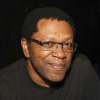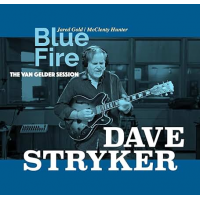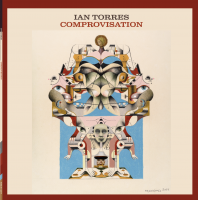Home » Jazz Articles » Album Review » Etienne Charles: San José Suite
Etienne Charles: San José Suite
Charles uses the coincidence of the name of San José to make a subliminal link between the Caribbean, Latin American and North American cultural tendencies. The real commonality is the idea of the African diaspora intersection with the Native American antecedents to act as the base for a new direction in jazz.
The persistence and resilience of these San José communities—in Trinidad (San José de Oruña becomes St. Joseph), in Costa Rica, in California—and their resulting musical legacies serve as a catalyst for creation. The rhythmic and melodic retentions and the new hybrids in these American spaces are explored with adroit musicianship that captures the newer elements of the African confrontation with European music: jazz, "music beyond the manuscript."
This is a breathtakingly large project and Charles' vision is wide enough to handle it. He is the researcher, the traveller, the chronicler of remade sounds and rhythms, not the imitator who artificially resurrects a catalogue of echoes and handed down music.
Charles is mining those stories and ideas of Native American heritage, and the later African interlude to re-chart the ruins, as Trinidadian artist and writer LeRoy Clarke would say, to present the modern listener with an intelligent yet accessible understanding of who we are in the Americas. A people remade as a polyglot mix of Meso-American, African, European languages, beliefs and inheritances. This is an extension of Charles' Creole Soul in the New World.
These compositions set a new paradigm for local creativity that must be applauded. With the receipt of the Chamber Music America New Jazz Works Grant, funded by the Doris Duke Charitable Foundation, Charles was able to use his imagination and to explore the broader traditions of creole cultural persistence.
As a result, he was freed from the strictures of a "small place" philosophy and its narrowing commercial milieu, to compose melodies and harmonic responses to the shards of historical evidence of the impact of colliding destinies and racial biographies of the people of this New World.
On this album, we hear the stories of the aboriginal peoples of the San José towns/cities: the Nepoio (Nepuyo) of Trinidad, the Boruca of Costa Rica and the Muwekma Ohlone of California. Their epic memory is reborn by music that addresses the dances and the songs of resistance of those first peoples. In some areas, imagination leads Charles to mimic earth sounds with his rhythm section of Ben Williams on bass and John Davis on drums to great effect. We are part of that sonic history that re-connects to ancestors, ancient culture and traditions.
On this album, we hear the legacy of the late nineteenth century presence of the Caribbean migrant in the Costa Rican towns of Limon and Cahuita. The Trinidad calypso is a musical retention that is locked into modern Costa Rica. In 2012, the government of Costa Rica, by executive decree, gave special recognition to calypso as part of Costa Rica's cultural and historical identity, and declared the style of music "national patrimony." We are listening to a reflection of our Caribbean past supplanted on the Central American present.
On this album, the African and African-American confrontations of the ex-slave-cum-West India Regiment soldier Macandal Daaga in 1837, and the sociologist and activist Dr. Harry Edwards in 1968 with the status quo of Trinidad and Californian institutional miasma, respectively, are re-interpreted as percussive and funky statements of revolution and rebellion. Conquests of ideas, of social dictates, of sacred spaces are brought to bear as Charles focuses the listener to understand that the America of our imagination and sometimes narrow fields of view is not circumscribed. This music is the extension of the Creole Soul in the New World.
The Nobel laureates cited in the epigraphs in the beginning of this article have all defined art, and how we interact with our past. This album is a noble declaration that this Trinidad space can and does understand the historic precedence of all people who have lived here in the Americas. It contributes an excellent example of how to rise above the ruins, beyond amnesia, beyond limitation and mere simplicity. It is left to Trinidadian Nobel laureate VS Naipaul to note: "The world outside existed in a kind of darkness; and we inquired about nothing." San José Suite makes us to see and hear a wider America. We are blessed.
Track Listing
Boruca; Limon; Cahuita; Hyarima - 14 October 1637; Revolt; Juego de Los Diablitos; Muwekma; Song for Minh; Gold Rush 2.0; Speed City Intro; Speed City; Speed City (reprise).
Personnel
Etienne Charles
trumpetEtienne Charles: trumpet, percussion; Brian Hogans: alto sax; Alex Wintz: guitar; Victor Gould: piano, organ, Fender Rhodes; Ben Williams: bass; John Davis: drums; Dr Harry Edwards: spoken word (tracks 10, 11, 12).
Album information
Title: San José Suite | Year Released: 2016 | Record Label: Culture Shock Music
Tags
PREVIOUS / NEXT
Etienne Charles Concerts
Support All About Jazz
 All About Jazz has been a pillar of jazz since 1995, championing it as an art form and, more importantly, supporting the musicians who make it. Our enduring commitment has made "AAJ" one of the most culturally important websites of its kind, read by hundreds of thousands of fans, musicians and industry figures every month.
All About Jazz has been a pillar of jazz since 1995, championing it as an art form and, more importantly, supporting the musicians who make it. Our enduring commitment has made "AAJ" one of the most culturally important websites of its kind, read by hundreds of thousands of fans, musicians and industry figures every month.




















